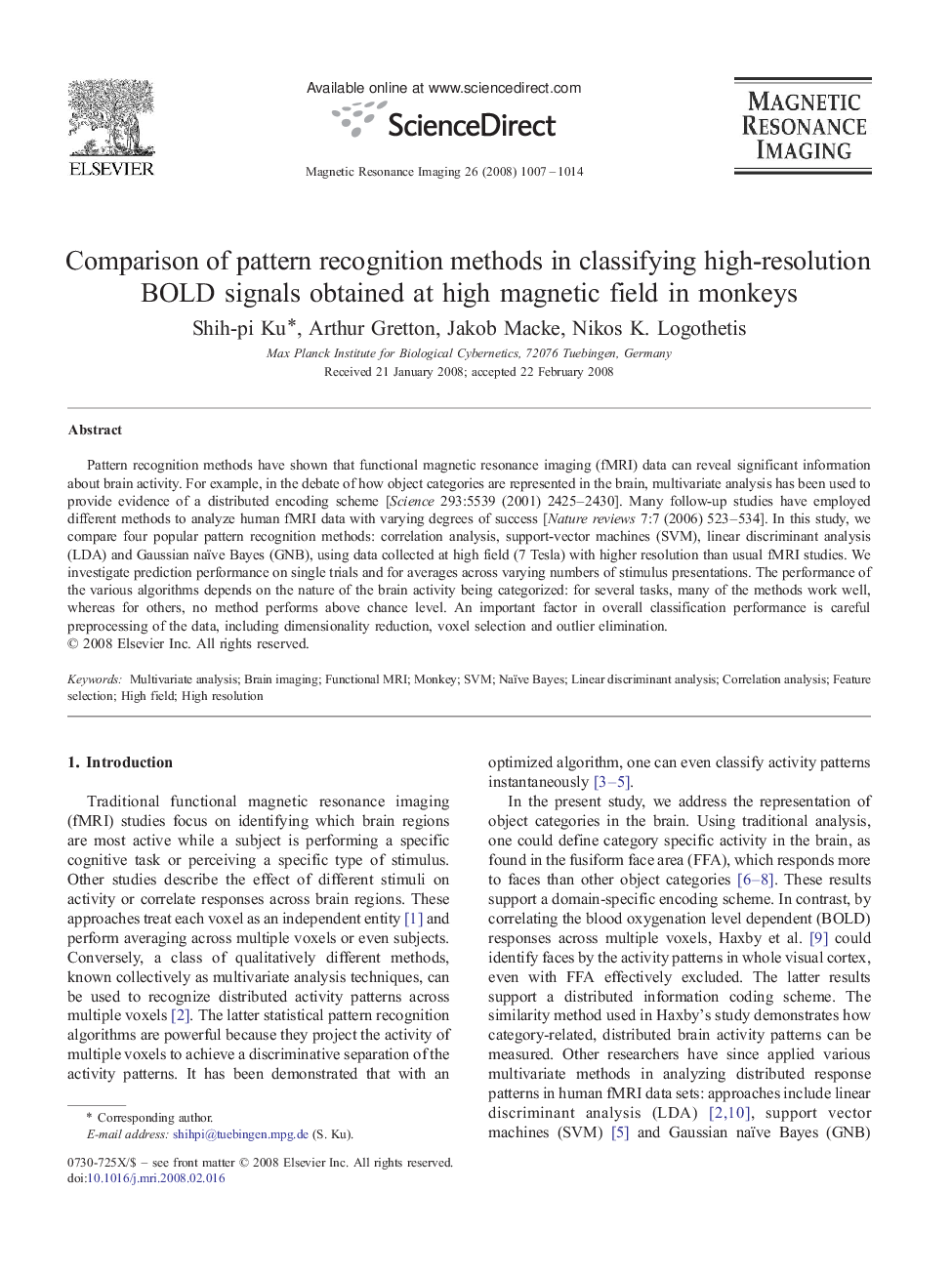| Article ID | Journal | Published Year | Pages | File Type |
|---|---|---|---|---|
| 1807584 | Magnetic Resonance Imaging | 2008 | 8 Pages |
Pattern recognition methods have shown that functional magnetic resonance imaging (fMRI) data can reveal significant information about brain activity. For example, in the debate of how object categories are represented in the brain, multivariate analysis has been used to provide evidence of a distributed encoding scheme [Science 293:5539 (2001) 2425–2430]. Many follow-up studies have employed different methods to analyze human fMRI data with varying degrees of success [Nature reviews 7:7 (2006) 523–534]. In this study, we compare four popular pattern recognition methods: correlation analysis, support-vector machines (SVM), linear discriminant analysis (LDA) and Gaussian naïve Bayes (GNB), using data collected at high field (7 Tesla) with higher resolution than usual fMRI studies. We investigate prediction performance on single trials and for averages across varying numbers of stimulus presentations. The performance of the various algorithms depends on the nature of the brain activity being categorized: for several tasks, many of the methods work well, whereas for others, no method performs above chance level. An important factor in overall classification performance is careful preprocessing of the data, including dimensionality reduction, voxel selection and outlier elimination.
